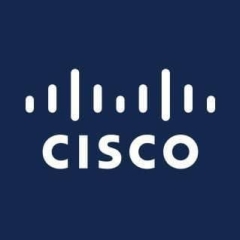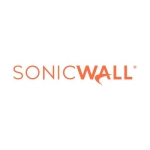What is our primary use case?
Telindus, our company, is an integrator. We sell Firepower and we do use it ourselves. I use all the different versions of the product.
We either replace our customers' other brands of firewalls with Firepower, or we upgrade their old Cisco ASA Firewalls to the new Firepower firewalls. The type of device we advise them to install depends on the customer's requirements and the throughputs needed.
Our primary use case for Firepower is for big networks.
What is most valuable?
The most important feature is the intensive way you can troubleshoot Cisco Firepower Firewalls. You can go to the bit level to see why traffic is not handled in the correct way, and the majority of the time it's a networking issue and not a firewall issue. You can solve any problem without Cisco TAC help, because you can go very deeply under the hood to find out how traffic is flowing and whether it is not flowing as expected. That is something I have never seen with other brands. That is why, when people move from another brand to Cisco, they never leave Cisco. They see that advantage.
Something I like about Firepower, in general, is that it still relies on the old ASA code. That's something customers really like because when they go into the CLI, they remember, "Oh, that's the ASA, that I am familiar with," but it's enriched with all the next-gen features of Snort. When a customer has knowledge of the ASA codes, they can do intensive troubleshooting because they know the device.
Customers also like Talos, which is the intelligence behind all of Cisco's security products, including Firepower. Talos is very good and is actually the most important part of a security product. It's important that you have something in the background that is continuously enriching intelligence so that you get information about upcoming threats on time. That keeps you protected as soon as possible when a Zero-day happens. Something that customers like about Cisco Firepower, in combination with Talos intelligence, is that full-time people are working in the background to provide information to Cisco security products.
Customers really want visibility into their networks. For example, they want identity management and that is something you can use Firepower for. With it, in addition to an IP address going somewhere, you can also see the username. That's a big advantage of Firepower, and can be set up quite easily.
Also, in very large networks, our customers use Cisco DNA Center. They have automation orchestration for their access network and that works seamlessly with Cisco Firepower firewalls. Security Group Tags can be used from DNA to an edge Firepower firewall. That way, they have microsegmentation within their access network for DNA. And they can extend that to their firewall rules for Firepower.
Our customers also use Cisco ISE to get user information. ISE is connected to DNA Center. That is something that Firepower works seamlessly with, and we do sell it a lot. We sell a lot of Cisco's other security equipment, and they all send their information to SecureX. Having more Cisco security products means your security information is becoming enriched within the SecureX platform. The integration among these Cisco products is more than easy. Cisco documents everything, in detail, when it comes to how to integrate the different parts. I've never had an issue with integrating Cisco security products with each other.
And for smaller networks, like those our government customers have, what they like about Cisco Firepower, and why they purchase it nine out of 10 times, is its ease of use and the reporting in Firepower Management Center. That is something they really like. They can look up things themselves and they like the SecureX integration.
What needs improvement?
The Firepower FTD code is missing some old ASA firewalls codes. It's a small thing. But Firepower software isn't missing things that are essential, anymore.
For how long have I used the solution?
I've been using Cisco Firepower NGFW Firewall since it came out; from the time Cisco started to use the name Firepower and they bought Snort. That's when they put in the next-generation features.
What do I think about the stability of the solution?
Firepower is rock-stable. So far, I have not seen any failed firewall. The only thing that was not quite stable in the past was Firepower Management Center, but since version 6.6 that has also been rock-stable. I haven't had any failed components in the last couple of years. I did have them two years ago and further in the past, where firewalls were not functioning and needed a reboot, but since 6.6, the stability is very good. We don't have priority-one tickets anymore.
What do I think about the scalability of the solution?
In the Netherlands, where I work, we don't have very big customers requiring very high throughput. So I cannot say anything about clustering where you can pile different ASAs or Firepower devices together to increase performance when you require it.
But scalability, in general, is pretty hard. Competition-wise, sometimes it's hard to sell Cisco security products because, in my opinion, Cisco is quite honest about the real throughput they are able to provide. Other vendors may be giving figures that are a little bit "too perfect." Sometimes it's hard for us to sell Cisco firewalls because a customer says, "Well, when I go to other brands they say they have double the throughput for half the price." Well, that's great on paper, but...
In general, after we have installed Cisco firewalls, our customers are very pleased by the performance. They also like that they can tweak settings to get more performance out of the firewall by enabling specific policies for specific traffic, and by disabling inspection for very internal data center traffic. That provides a big boost to the overall firewall performance. When a customer complains that we didn't scale it correctly, and they say it's not performing as well as they expected, I'm always able to tweak things so that it performs the way the customer requires.
How are customer service and technical support?
I have interacted with Cisco's technical support many times. Nowadays, it sometimes takes a while to get to the person with the correct knowledge, but that is happening in the world in general. First-line people are common around the world and they are trying to figure out if an issue is actually a second-or third-line issue. But when you do reach the correct department, and they know that you are knowledgeable and that you are really facing a high-priority issue or a strange behavior, Cisco's support does everything it can to help you fix things, including involving the development department. I'm very happy with their tech support.
Which solution did I use previously and why did I switch?
Most of the time we replace Sophos, Check Point, SonicWall, and Fortinet firewalls with Cisco firewalls. Customers really like the overall integration with SecureX. They see the advantage of having more security products from Cisco to get more visibility into their security. We also replace old, non-next-generation firewalls from Cisco; old ASAs.
How was the initial setup?
The initial deployment of Firepower is a straightforward process. For me, it's pretty easy. If you have never worked with it, I can imagine it might be complex.
Cisco makes it easier all the time. You can now deploy a remote branch by managing the device on an external interface. In the beginning, with previous software versions, that was hard. You needed to configure the file as a remote branch, but for that you needed the central Firepower Management Center to configure it and you didn't have a connection yet. It was a big issue to set up an initial firewall remotely when there was no connection to the Management Center. But that's been fixed.
In general, you just put down some management IP addresses and configure things so that the devices see each other and it starts to work. It's far from complex.
Generally, the initial setup takes four hours. The implementation strategy depends on the customer. I always have a conversation with the customer upfront. I explain how the connectivity works for Cisco Firepower, and then I say that I want to be in a specific subnet field. Then I start configuring the basics, and that is the part that takes about four hours, for Firepower Management Center and two firewalls in HA. Then, I start to configure the firewalls themselves, the policies, et cetera.
Which other solutions did I evaluate?
I have experience with SonicWall, Fortinet, Juniper, and Sophos firewalls, among others. We work with Fortinet and Palo Alto. It's not that we only do Cisco. But I can say from my experience that I am really more convinced about Cisco products.
What customers really like about Cisco, the number-one thing that they are really happy about within Firepower—and it was also in the old ASA code, but it's even more a feature in Firepower—is that the configuration is in modules. It's modular. You have different policies for the different functions within your firewall, so that your access control policy is only for your access lists and that's it. You have a different network address translation policy. It's all separated into different policies, so a customer knows exactly where to look to configure something, to change something, or to look at something which is not working properly.
Also, with Cisco, when a customer is not totally certain about a change he's going to make, he can make a copy of the specific access control policy or the NAT policy. If something doesn't go right, he can assign the copied policy back to the device and everything is back to the way it was.
These are the biggest advantages our customers see. When a customer doesn't have any knowledge about firewalls, I can explain the basics in a couple of hours and they have enough familiarity to start working with it. They see the different modules and they know how to make a backup of a specific module so that they can go back to the previous state if something goes wrong.
What other advice do I have?
My advice is "buy it." A lot of people prefer a specific brand and it's fairly hard to convince them that something else, like Cisco, is not bad, as well. They are so convinced about their existing firewall that they want to keep that brand because they are familiar with it and they won't need to learn a new firewall. It's hard for a customer to learn how a firewall works in the first place.
But my advice is that people should read about how Cisco security, in general, is set up and how it is trying to protect them with Talos. They need to understand that Cisco security is very good at what it does. They shouldn't blindly believe in what they have at the moment. I always hear, "My firewalls are good enough. I don't need Cisco. I will just buy the same ones, but new." Cisco Firepower is superior to other firewalls and people should not be afraid to dive in. By educating themselves about the firewall, they will be fine in managing it.
Practically speaking, Cisco firewalls are easier to manage than the firewalls they have at the moment, but they need to make the leap and try something else. That is the hardest part. When I do show them what they are capable of, and how you can configure all kinds of different things, they start to understand.
We don't have many customers that use other vendors' security products together with Firepower. We convince nine out of 10 customers to go over to Cisco fully. We do have customers who don't do that, and then we try to find a way to get the solutions to work together. For example, we try to integrate other brands' switches or firewalls with Cisco security products, but most of the time that is pretty hard. It's not the fault of Cisco. It requires that the other brands speak a protocol language that will support integration, but in the end, it's not perfect and the integration does not work very well. The majority of the time, we are not able to integrate into other security products. Cisco is using standard protocols, but the other vendor is abusing some sort of protocol and then it doesn't work well.
I don't prefer using applications in firewall rules, but our customers do use the application visibility and control, and it works perfectly. Firepower is very good at recognizing the application and is very good at showing you the kind of application that has been recognized. Customers use that in their access control policy rules, and I have never heard bad things about it. Cisco Firepower works very well in recognizing applications.
I get questions from customers because they do not understand threat messages generated by Firepower. Sometimes, it's hard to read what exactly the message is saying. In my opinion, that is not something that is specific to Cisco security or Firepower, rather it is an issue with security in general. Most networking people get these fancy firewalls and they get fancy security events. It's hard for some of them to understand what is meant, and what the severity level is of the message. It's more that a networking guy is trying to read security events. Firepower is doing a good job, but customers sometimes have problems understanding it and then they stop looking at it because they don't understand it. They assume that Firepower is taking the correct actions for them.
Firepower is not a fire-and-forget box. It is something you actually do have to take a look at. What I tell customers is, "Please enable Impact-One and Impact-Two messages in your mailbox, and if it's really something that you cannot understand, just forward it to me and I will take a look for you. Most of the time they are not very high-impact messages. There are only one or two high-impact messages per month.
There are customers who say, "We want you to review the messages in Firepower once a week." I have a look at them when I have time. We try to help the customer check security events once a week or so. That's not great, but it's always a question of finding a good balance between the money a customer can spend and the security aspects. When we do monitor all the events, 24/7, for a customer, you can imagine that it is quite expensive.
I configure every customer's automatic tweaking of IPS policies so that the IPS policy is enabled for the devices seen by Firepower, for recognition of what kinds of clients and hosts are in the network. Other than that, we do not do a lot of automation within Firepower.
Since 7.0, I don't have a lot of things to complain about. If I do have suggestions for improvements, I will give them during the beta programs. The speed of the FMC is very good. The deployment time is much better. They added the policy deployment rollback. That was something I really missed, because if I destroyed something I was able to undo that. Now, for me, it's actually almost perfect.
Disclosure: PeerSpot contacted the reviewer to collect the review and to validate authenticity. The reviewer was referred by the vendor, but the review is not subject to editing or approval by the vendor. The reviewer's company has a business relationship with this vendor other than being a customer: Reseller












